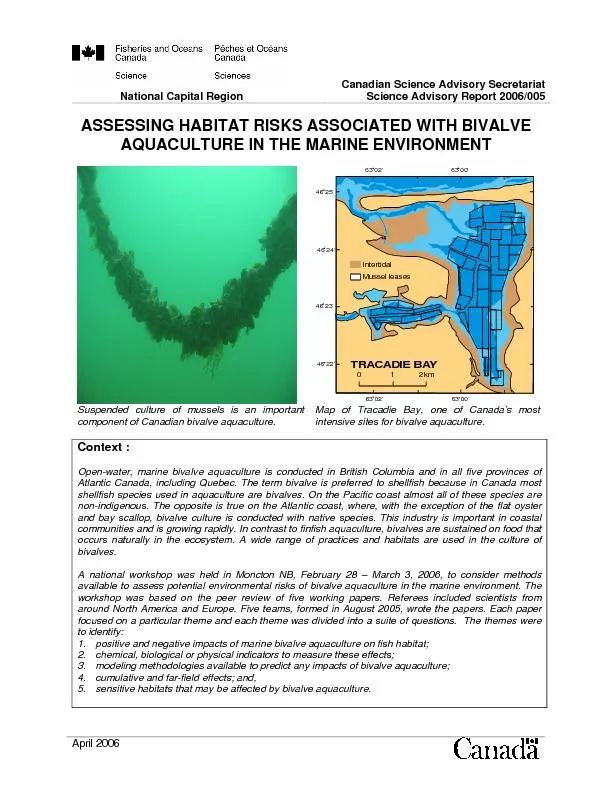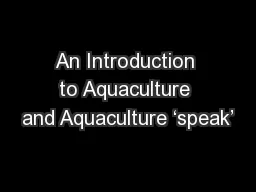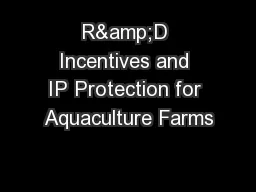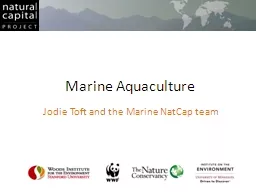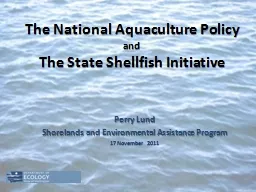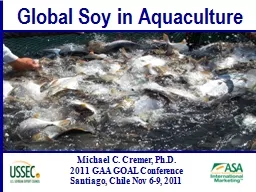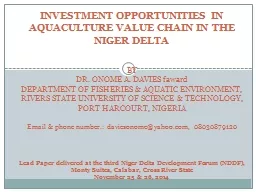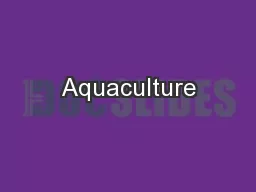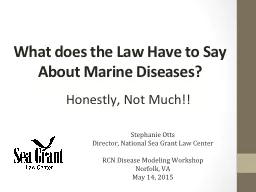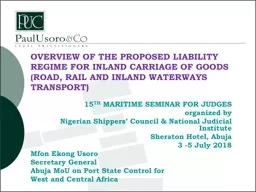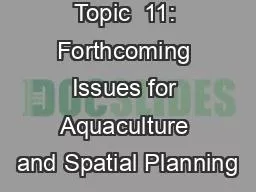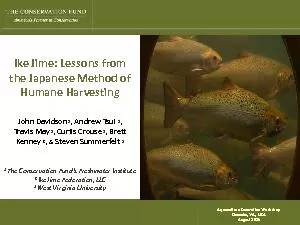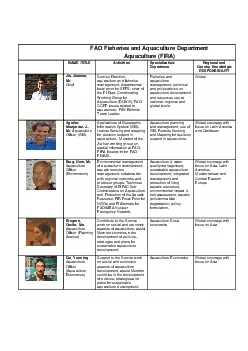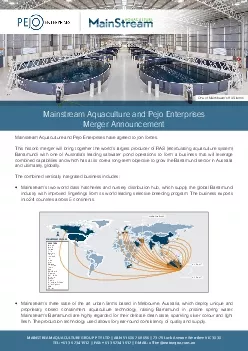PDF-National Capital Region Bivalve Aquaculture in the Marine Environment
Author : lindy-dunigan | Published Date : 2016-10-17
3 projects or for providing expert advice on fish and fish habitat for the purposes of environmental Habitat Management has sought science advice to support defensible
Presentation Embed Code
Download Presentation
Download Presentation The PPT/PDF document "National Capital Region Bivalve Aquacult..." is the property of its rightful owner. Permission is granted to download and print the materials on this website for personal, non-commercial use only, and to display it on your personal computer provided you do not modify the materials and that you retain all copyright notices contained in the materials. By downloading content from our website, you accept the terms of this agreement.
National Capital Region Bivalve Aquaculture in the Marine Environment: Transcript
Download Rules Of Document
"National Capital Region Bivalve Aquaculture in the Marine Environment"The content belongs to its owner. You may download and print it for personal use, without modification, and keep all copyright notices. By downloading, you agree to these terms.
Related Documents

